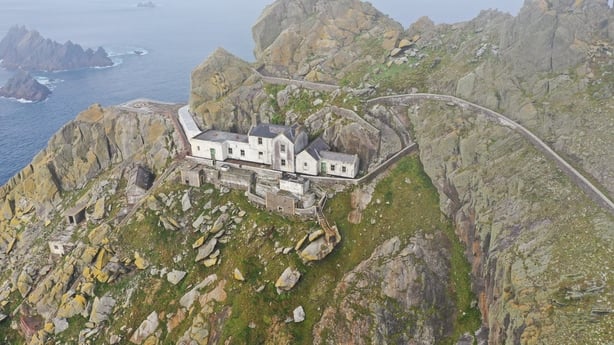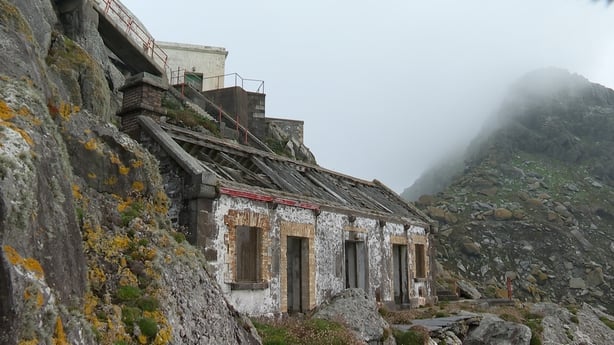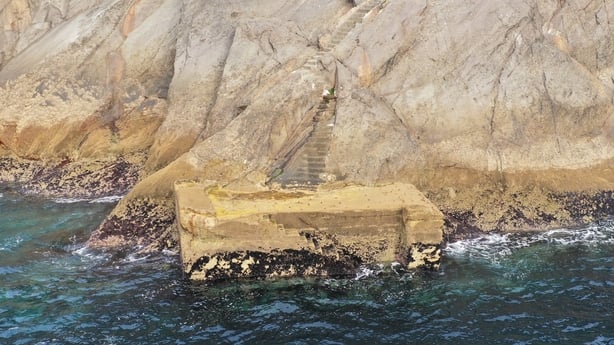Concerns are being raised in Co Kerry over the condition of Europe's most westerly lighthouse station.
It is claimed the old lightkeepers’ dwellings on An Tiaracht, an island part of na Blascaodaí, are showing significant signs of deterioration due to harsh elements and a lack of regular maintenance.
The exposed location of the lighthouse dwellings has resulted in its roof being compromised and masonry is beginning to deteriorate.
Powerful Atlantic seas have also significantly damaged the landing place beneath the station, where the concrete capping has been ripped away.
Managed by the Commissioners of Irish Lights the dwellings are no longer required for the functioning of the light ever since the withdrawal of the keepers from the rock in 1988.
However, conservationists and tourism interests say the 155-year-old buildings should be maintained for their historic value and their potential to offer accommodation to researchers.

Local boatman Mick Sheeran, who has been operating around An Tiaracht since 1976 said the lighthouse dwellings need urgent attention.
"They do a great job with the lighthouse itself but the lightkeeper houses are being neglected.
"They’re important historic buildings, but they are not being maintained to the standard you’d expect.
"There are holes in the roof, slates gone, the plasterwork is coming off exposing the masonry.
"There are broken windows. It hasn’t received a coat of paint for ten or twelve years I’d say. It’s just getting worse and worse," said Mr Sheeran.
"It's at the stage now that it needs urgent intervention. It wouldn’t cost much now to fix and secure the buildings, but if you leave it another few years, with the storms we get out here, the roof won’t be long coming off and then it will be beyond repair.
"It’s embarrassing that as a nation we can’t look after such historical buildings," he added.
Mr Sheeran believes essential work needs to be carried out on the landing pier immediately.
"The cap has been lifted off by the sea, exposing the blocks. Those blocks won't last long in the heavy seas around Tiaracht.
"They'll be picked off one by one and the next thing the entire pier will be swept away. Now is the time to repair and seal it again. It wouldn't cost much."

Last April, the Government announced the establishment of the Pairc Náisiúnta na Mara, a 70,000-hectare national park which contains a significant marine element, including a special area of conservation on na Blascaodaí.
Fondúireacht an Bhlascaoid (The Blasket Foundation) said An Tiaracht is a key part of the new park and that every effort should be made to protect the lighthouse station.
Its chairman Pádraig Firtéar believes the old buildings could be used for research purposes, accommodating the likes of marine scientists, ornithologists, botanists and geologists.
"It was a remarkable achievement, which took tremendous effort, to build these houses on An Tiaracht.
"It would be a shame to just let them go. Now that it is part of the new national marine park, and with all the history of the place it’s sad to see it in its dilapidated state with windows broken, slates gone off the roofs and mortar falling off the walls," said Mr Firtéar
"A plan of action is needed to protect them, to reconstruct them, or at the very least to carry out some conservation work on them.
"It’s one thing to announce a national park but with such an initiative comes duties and responsibilities and I would be calling on the state to provide funding for these buildings before it’s too late. There’s too much history and heritage to lose there," he added.
The Commissioners of Irish Lights is responsible for the supervision and management of all of Ireland’s lighthouses.
In a statement the maritime organisation said the automation of the lighthouse since 1988 means "the operational footprint being maintained is now significantly smaller and excludes the dwellings and associated buildings".
"Irish Lights prioritises maintenance of operational areas and equipment to ensure the provision of the most effective and reliable aids to navigation possible.

"In addition, Irish Lights continually reviews the condition of the properties at Inishtearaght and will prioritise work that reduces environmental impact and ultimately aims to promote positive biodiversity on the site which lies within the Blasket Islands Special Area of Conservation and Special Protection Area, and Páirc Náisiúnta na Mara Ciarraí," it said.
In response to a query regarding the possibility of repair work being carried out to the damaged landing area, the statement said: "In regard to the boat landing, Irish Lights primary means of access to this location is by helicopter and the boat landing would only ever be used for emergency egress and its condition is suitable for this purpose.
"Given the hazardous nature and location of this lighthouse, public access is not permitted."
Known within maritime circles as Inishteeraght Lighthouse, the station is perched on the upper ledges of around 200-metre high rock.
The light was first lit on An Tiaracht in 1870.
The adjacent dwellings provided accommodation for the lighthouse keepers and their families. At one stage up to 13 people lived on the rock.
In 1913 one of the keepers fell to his death while attempting to catch a goat for milking.
A fog signal which gave three blasts every 45 seconds was discontinued in 1987.
The last keepers were withdrawn from An Tiaracht in 1988 when the light was switched to automatic operation.







